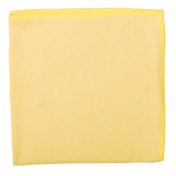Candles can be found in every household, whether they are colored, brightly colored, white or even scented. But have you ever wondered how candles are actually made and what material they are made of? There are also different opinions about the material used to make candles, as some are harmful to health and bad for the environment. We want to answer all of these questions in this blog post today.
How are candles made?
There are different processes for making candles, depending on which type of candle you are aiming for. Generally, candles are made both by hand and by machine. A traditional process is pulling . In this process, several meters of wick are stretched over a wax bath. The wick is then pulled through the wax bath again and again. The thickness of the strand depends on how often the cooled wick is pulled through the wax bath. This process is used in particular to make Christmas tree candles. Candles can also be poured. Using this method, almost any candle shape can be made. First, a mold is needed, which is usually made of metal, rubber or Plexiglas. A wick is placed in the middle of the mold and in the next step the wax is poured into the mold.
Other candle manufacturing processes
 Pillar candles, ball candles, scented candles, tea lights and grave lights are made using the pressing process . This method uses powdered paraffin which is pressed into a mould using high pressure. It is also possible to press the paraffin in a compression chamber, where a strand is then pushed through A press caliber is used to press the wick out. The strand can then be processed further. The wick is then pressed in with a pipe guide. The oldest method is dipping . It is similar to the drawing method. The wick is repeatedly dipped into a wax mass. With each repetition, a new casing and the candle increases in diameter. This method is used, for example, for beeswax candles.
Pillar candles, ball candles, scented candles, tea lights and grave lights are made using the pressing process . This method uses powdered paraffin which is pressed into a mould using high pressure. It is also possible to press the paraffin in a compression chamber, where a strand is then pushed through A press caliber is used to press the wick out. The strand can then be processed further. The wick is then pressed in with a pipe guide. The oldest method is dipping . It is similar to the drawing method. The wick is repeatedly dipped into a wax mass. With each repetition, a new casing and the candle increases in diameter. This method is used, for example, for beeswax candles.
What are candles made of?
A common raw material used in candle production is paraffin. Paraffin is a waste product from lubricating oil production and is scarce and expensive in Europe. The manufacturing processes have now been optimized and hardly any paraffin is produced anymore and therefore has to be imported. The material complies with EU guidelines and is therefore not considered harmful to health or the environment . Candles can also be made of stearin. Stearin is made from vegetable and animal fats and oils . The quality of stearin candles is better, which can also be seen in the weight of the candles. There are also candles made of stearin and paraffin, as stearin is more expensive than paraffin. However, if the candle contains a maximum of 10% paraffin, it can still pass as a stearin candle. In general , stearin candles are more dimensionally stable and are less sensitive to heat than paraffin candles. Candles made of paraffin can be molded at just 40°C. Palm oil is also a material used in candle production. It is mined mainly in Indonesia and consumption has increased tenfold since 1990. The use of palm oil can therefore be viewed with a critical eye. There are now also candles made from soy or rapeseed oil . Since stearin candles, for example, are partly made from animal products, they are not vegan. Rapeseed and soy oil, on the other hand, are. Candles made from beeswax, on the other hand, are the most environmentally friendly option , especially if the wax comes from an organic beekeeping operation.
In this part you got an overview of how candles are made and the material used for candles. In the next post we will look at the sustainability and health aspects of candles.



